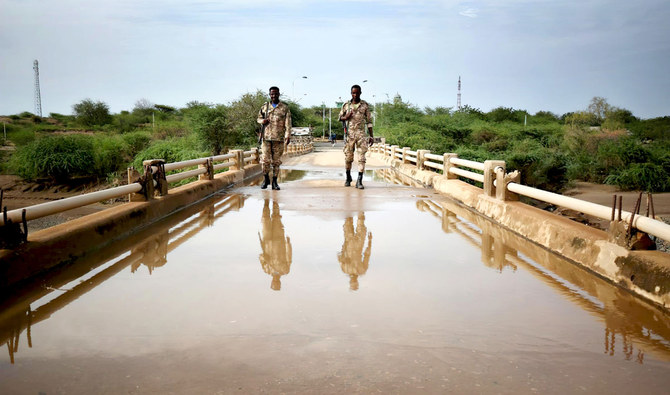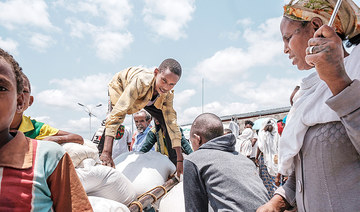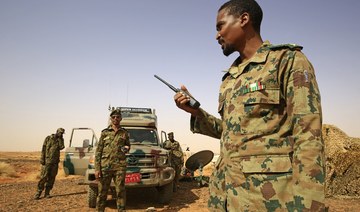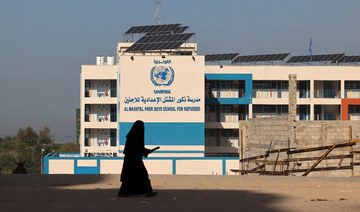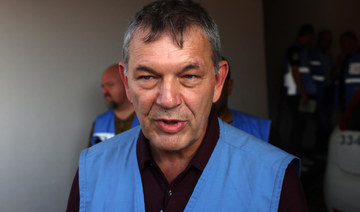WAD EL-HILU, Sudan: From time to time, a body floating down the river separating Ethiopia’s troubled Tigray region from Sudan was a silent reminder of a war conducted in the shadows. But in recent days, the corpses became a flow.
Bloated, drained of color from their journey, the bodies were often mutilated: Genitals severed, eyes gouged, a missing limb. The Sudanese fishermen who spotted them, and the refugees from Tigray who helped pull them to shore, found many corpses’ hands bound. Some of them had been shot.
The Associated Press reported dozens of bodies floating down the Tekeze River earlier this week and saw six of the graves on Wednesday, marking the first time any reporters could reach the scene. Doctors who saw the bodies said one was tattooed with a common name in the Tigrinya language and others had the facial markings common among Tigrayans, raising fresh alarm about atrocities in the least-known area of the Tigray war.
“They are from Tigray,” said Garey Youhanis, a Tigrayan who helped bury several bodies found on Sunday. With a piece of red cord, he demonstrated how their hands were tied behind their backs. He squatted on the rock-strewn shore, crossed himself and prayed.
The deaths are the latest massacre in a nine-month war that has killed thousands of civilians and is now spilling into other regions of Ethiopia, Africa’s second-most populous country and the anchor of the often-volatile Horn of Africa. Though Tigray forces in June reclaimed much of the region as Ethiopian and allied forces retreated, western Tigray is still controlled by authorities from Ethiopia’s neighboring Amhara region, who have cleared out many ethnic Tigrayans while saying the land is historically theirs. Witnesses have told the AP of watching mass expulsions.
More than 60,000 Tigrayans fled to Sudan, where thousands remain in makeshift camps a short walk from the river in the hope of hearing news from those who still arrive. Some scrutinized the bodies in the river for clues, and they have asked Sudanese police and the United Nations to exhume them for autopsies.
“In the last one week, 43 bodies were buried around this river,” the surgeon from the nearby Tigray town of Humera, Tewodros Tefera, said. He and other refugees believe the bodies were dumped into the river at Humera, which has seen some of the worst violence since the war began in November.
“Some had amputated limbs and legs,” Tewodros said. “There was a man which we buried yesterday, his genital area was completely severed ... So this is the kind of trauma that we’re seeing of western Tigray.”
He said that two more bodies had been found, the first since the discovery of seven on Tuesday. But he believes an active search along the river could reveal “many, many more,” perhaps hundreds.
Ethiopia’s government has accused the rival Tigray forces of dumping the bodies themselves for propaganda purposes. A “fake massacre,” the spokeswoman for Prime Minister Abiy Ahmed, Billene Seyoum, told reporters on Thursday.
But the discovery has increased international pressure on the prime minister, a Nobel Peace Prize winner, at a time when his government is already accused by the UN, the US and the EU of besieging Tigray and blocking food and other aid to millions of people. Hundreds of thousands face famine conditions in the world’s worst hunger crisis in a decade.
Ethiopia’s prime minister in recent days referred to the Tigray forces as “weeds” and a “cancer,” bringing a warning from the UN special envoy on genocide prevention that such dehumanizing language “is of utmost concern.” Ethiopia’s government has said such talk is not meant to describe ordinary Tigrayans.
BACKGROUND
The deaths are the latest massacre in a nine-month war that has killed thousands of civilians and is now spilling into other regions of Ethiopia, Africa’s second-most populous country and the anchor of the often-volatile Horn of Africa.
But the bodies in the river brought new fears of ethnic cleansing, or the forcing of a population from a region through expulsions and other violence.
“We are deeply concerned by the latest developments,” the UN refugee agency in Sudan said on Thursday. It confirmed seeing one of the bodies pulled from the river along with “what appear to be several fresh graves.” It said it was unable to confirm the identifies of the dead or how they died.
Like other international aid organizations, the UN agency said it has no access on the Ethiopian side of the border region. Underlining that absence, the UN humanitarian agency on Wednesday tweeted a map showing no foreign aid group active in western Tigray. One that had worked there, the Dutch section of Doctors Without Borders, had its operations suspended by Ethiopia on July 30, accused by the government of spreading “misinformation” and illegally using satellite radio equipment.
Ethiopia’s government has alleged that aid groups are arming and supporting the Tigray forces, without evidence.
“Those who want corridors for weapons and non-humanitarian goods to be brought into them continue to try to manipulate the realities on the ground in an attempt to convince the world that unfettered access is not happening” in Tigray, the prime minister’s spokeswoman said. She called the Tigray forces, who dominated Ethiopia’s repressive government for years but were sidelined when Abiy took office, a “terrorist organization that has hijacked the well-being of the people of Tigray.”



